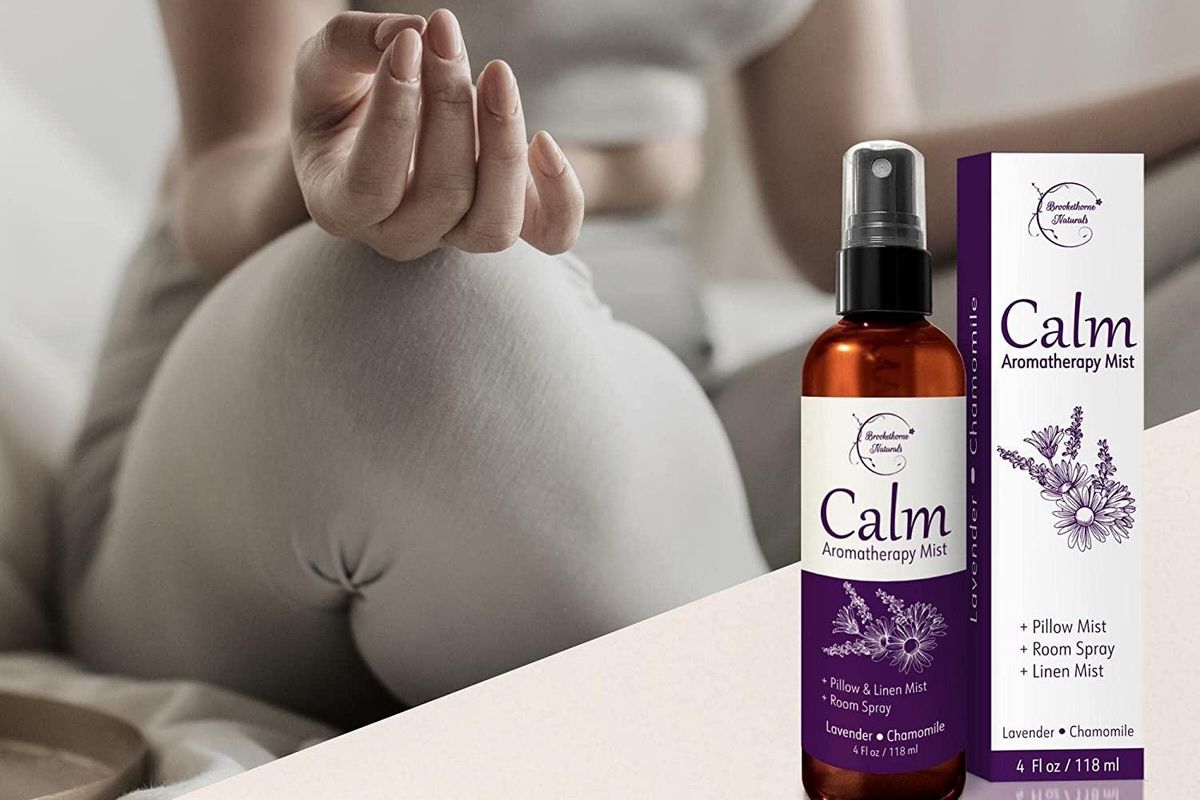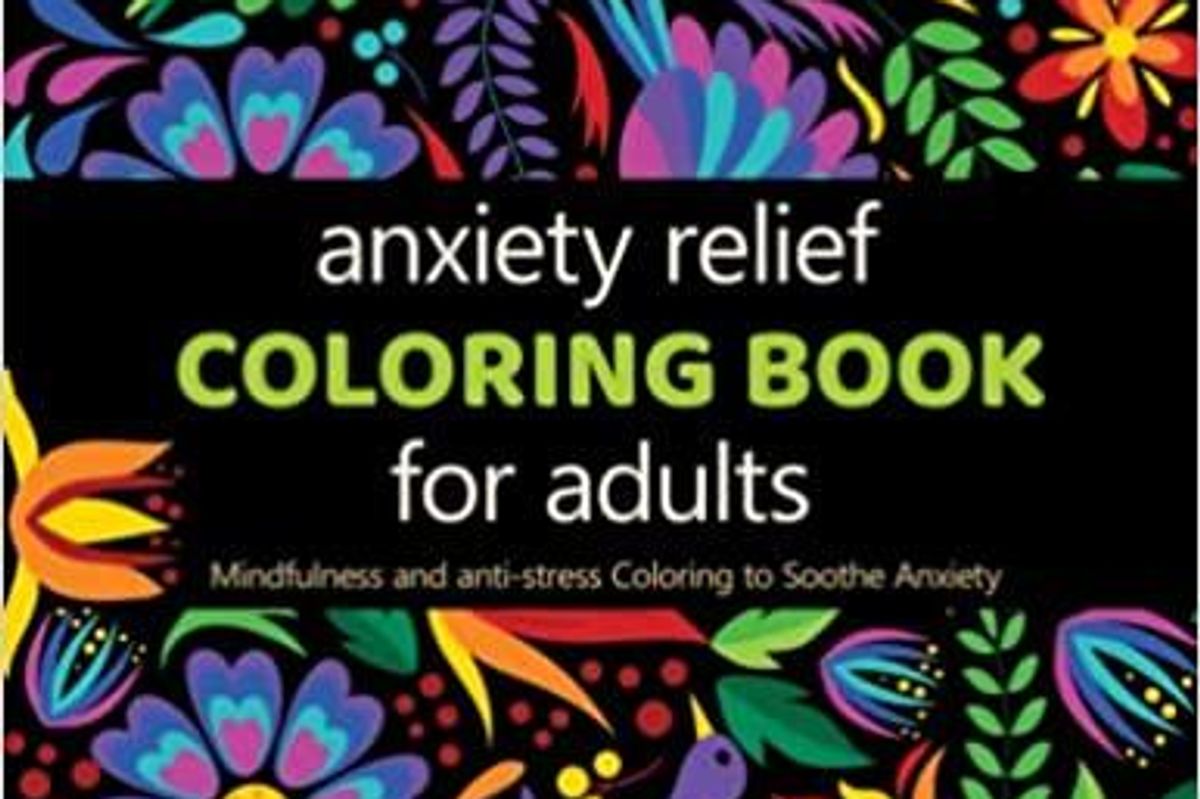Surprise, it's anxiety. Here are 5 things that can help rein in anxiety throughout the day.
Anxiety pops up at the most inopportune times.

Five things that can help rein in anxiety.
Having anxiety is fun and by fun I mean extremely inconvenient and overwhelming. If you don't experience anxiety then the idea of something invisible seemingly coming out of nowhere to activate your fight or flight response may seem strange. But it's the reality for more than 40 million people, and while no two people's anxiety looks exactly the same, there are some things that can help sufferers get through the day when anxiety shows up.
Anxiety can happen at any time and in any place, like at home watching TV or when trying to fall asleep. But most of the time it rears its head when people are away from the comfort of home. If you suffer from anxiety you'll be familiar with the feeling of having to repeat to yourself "be cool," when you are, in fact, not cool at all. Anxiety is always playing side-splitting jokes on sufferers when they least expect it—heavy on the sarcasm in that sentence. So what are you supposed if you suffer from anxiety and it just won't go away and let you live in peace? Lucky for you, I've created a list of what works for me, as a fellow sufferer, and that hopefully will help you too.

Stress balls.
Chameleon stress ball from Amazon
1. Something to squeeze or pop helps nervous energy.
Sometimes anxiety may feel like pent-up energy, so having something physical to do to relieve that energy can be really helpful. I've found that stress balls can really help get that "I'm about to go screaming down the hallway to cry in the bathroom" feeling to calm the heck down a bit. It may not take the anxiety away completely, but it will give you something to do with that energy and it's something you can do under your desk or in a meeting.

Calming spray.
Calm Aromatherapy Mist from Amazon
2. Mmmm, something that smells good can help.
Smell is a powerful tool when it comes to a lot of things but there's something about it that can really help calm your anxiety, especially when coupled with other tools. The smell you pick can literally be anything that makes you feel safe or calm. Your laundry detergent, perfume or lemons. Whatever it is, put it on a piece of fabric and shove that bad boy in a Ziploc bag for when you need to open it up for a whiff of "calm the heck down." If you're not sure where to start for smells, you can try lavender and chamomile spray.

Adult coloring book from Amazon
3. A coloring book works wonders.
Coloring books cover multiple sensory areas at once. You get to feel the pages, smell the crayons or colored pencils, and you get to see the colors. It's the sensory jackpot for anxiety and you can do this activity at work in your office or at home. I prefer the kid coloring books that have the giant pages so I can pretend I'm 9 years old. I lay on the floor and don't care about the lines. I highly recommend entertaining your inner child.

"Let That Sh*t Go Journal" from Amazon
4. Grab a journal and get it out.
Well, well, well, if it isn't the thing that therapists keep bringing up in sessions about taking care of yourself. You know they wouldn't keep harping on it if it didn't actually work for a lot of people. This journal is just a fun sweary journal with prompts for people who may not be good at writing what's on their mind. Journaling may be really helpful, but it shouldn't be something that stresses you out. If you find yourself freaking out over getting the journal done, then throw it in the trash because it's not serving the purpose it's supposed to.

Collage of items for sensory box.
Collage images from Canva
5. Keep a sensory box at work and home.
I like to call this my "take 15 box." Sometimes we need a little break to get it together and a sensory box is something you can stash at the office or at home. Basically what you put in a sensory box are things that will appease all five senses, which some therapists use to bring you back to the moment. Instead of looking around for the items, they're all in one spot. In the box you'll want to have some sort of candy for taste, cloth sprayed with whatever fragrance you prefer in an airtight bag, something visual like bubbles, a stress ball or pop it, and I'd say a CD, but no one uses those anymore so have a relaxing playlist ready and extra set of headphones in case you misplace yours.
Whatever your anxiety looks like, hopefully some of the things on this list work for you. Anxiety can be stressful and those of us who suffer from it need all the tips we can get for overcoming those moments.
- 12 haunting photos that capture how depression and anxiety can ... ›
- Anxiety affects everyone differently. These comics offer some great ... ›
- In a world that frames people with anxiety as 'weak,' Gina Rodriguez ... ›
- Scientists say taking whiffs of some everyday smells could actually change your life - Upworthy ›

